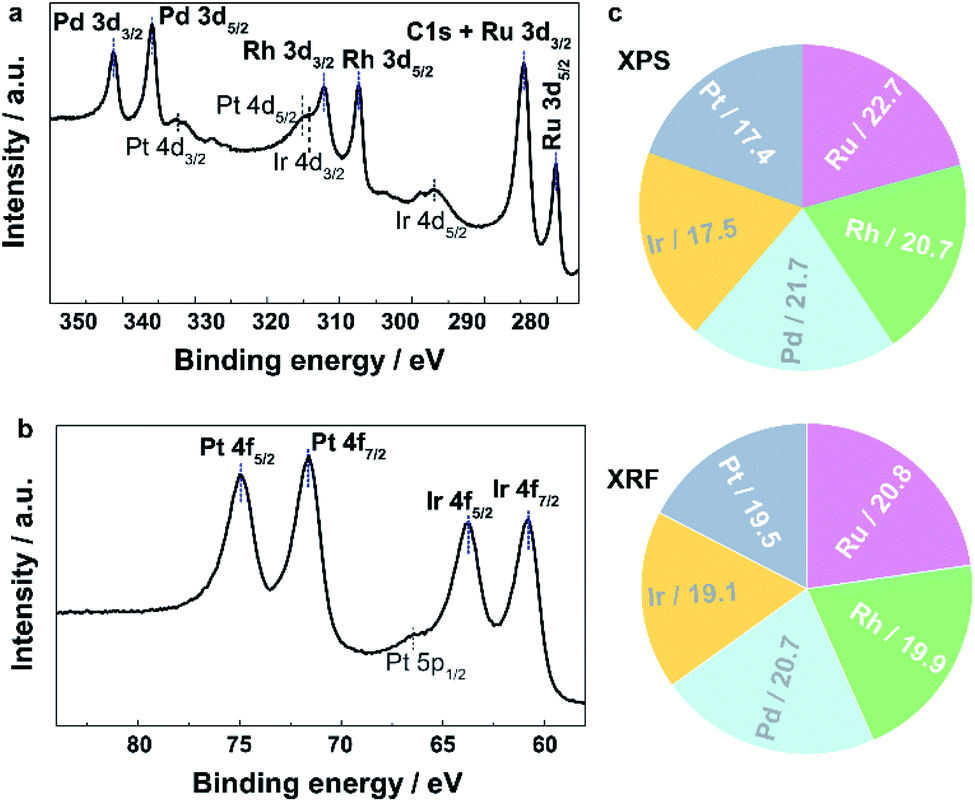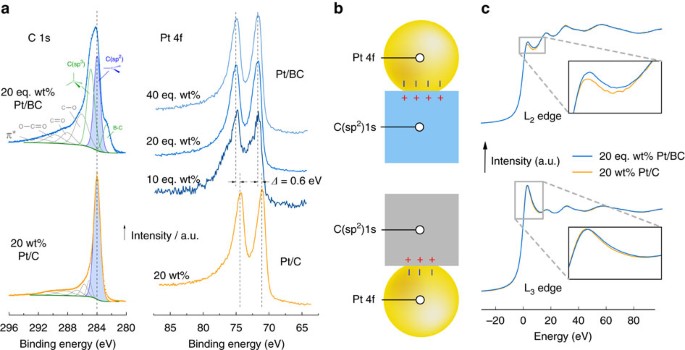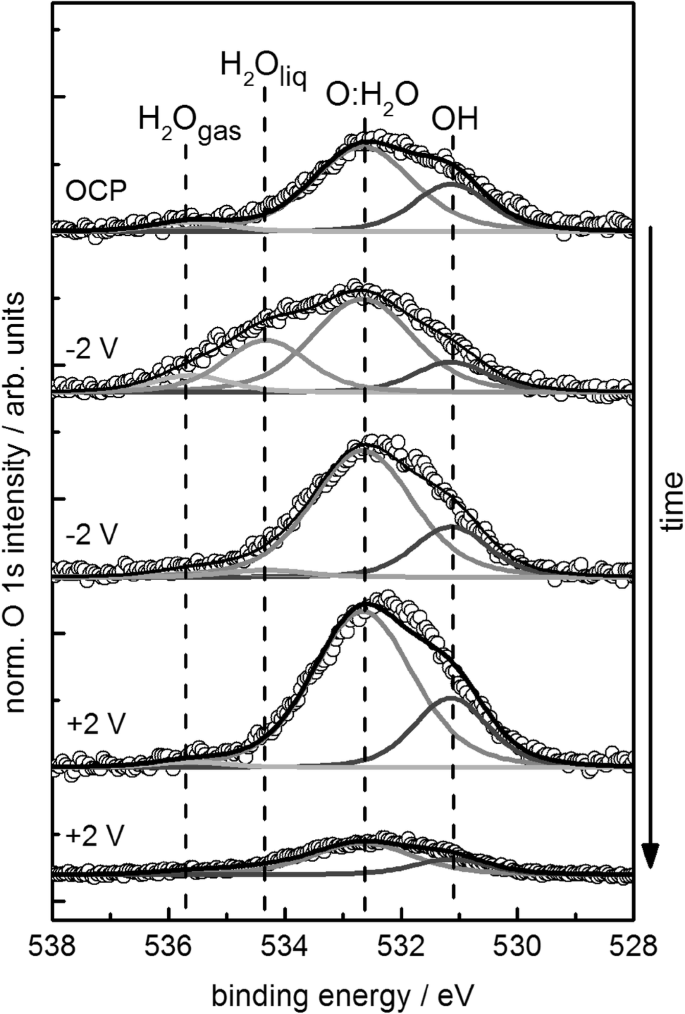

In a number of studies, graphene grown on Ir(111) has also been used as model carbon support for Ir, Pd, Pt, Na, Sm, W and Re clusters. HOPG supports have been previously used for studies of thermal- and electrocatalysis on Ag, Pt, Pd and alloy nanoparticles. Alike studies on model oxide supports, this yields impurity-free samples that are amenable to many surface-sensitive techniques. In the current study, we employ a surface science model catalyst approach by growing Pd nanoparticles in ultrahigh vacuum (UHV) on a single crystal substrate of highly oriented pyrolytic graphite (HOPG). Electronic interactions at metal/carbon interfaces can alter the binding energy of adsorbates and potentially enhance the hydrogen availability.

Carbon deposits on metal surfaces have been reported to modify (de)hydrogenation, presumably by selective site blocking. Furthermore, the carbon support may directly affect the Pd nanoparticles by formation of subsurface carbon or a metal–carbon phase. Despite their nominally simple composition, carbon supports may exhibit complexity in terms of morphology (activated carbon powders, nanotubes, graphene layers and nanoplatelets) and functionalization (e.g., doping by N or B ), enabling fine-tuning of applications in sensing. Įspecially when using carbon as support material, Pd nanoparticles exhibit favorable catalytic performance in selective (de)hydrogenation, oxidation and coupling. For reviews and further references refer to. Accordingly, (selective) hydrogenation reactions have been thoroughly studied, e.g., of ethylene, 1-butene, 2-butene, 1,3-butadiene, acetylene, propyne or unsaturated aldehydes. With respect to hydrogenation reactions, supported Pd nanoparticles are known to be the most selective, avoiding dehydrogenation and deactivation by undesired carbonaceous species. Supported metal nanoparticles are used in many fields of catalysis (environmental, chemical synthesis, energy generation by fuel cells, etc.), with Pt and Pd being specifically important. The performance of Pd nanocatalysts is compared to that of polycrystalline Pd foil and contrasted to Pt/HOPG and Pt foil, pointing to a beneficial effect of the metal/carbon phase boundary, reflected by up to 10 kJ mol −1 lower activation energies for supported nanoparticles.

A UHV-compatible flow microreactor and gas chromatography were used to determine the catalytic performance of Pd/HOPG in ethylene (C 2H 4) hydrogenation up to 150 ☌ under atmospheric pressure, yielding temperature-dependent conversion values, turnover frequencies (TOFs) and activation energies. Two model systems were stabilized by UHV annealing to 300 ☌, with mean Pd particles sizes of 4.3 and 6.8 nm and size/height aspect ratio up to ~ 10. Analysis of the HOPG substrate before and after ion-bombardment, and of Pd/HOPG before and after annealing, revealed the number of “nominal” HOPG defects (~ 10 14 cm −2) as well as the nucleation density (~ 10 12 cm −2) and structural characteristics of the Pd nanoparticles (mean size/height/distribution). Employing physical vapour deposition of Pd on sputtered surfaces of highly oriented pyrolytic graphite (HOPG), model catalysts were prepared that are well-suited for characterization by X-ray photoelectron spectroscopy (XPS) and scanning tunneling microscopy (STM). A surface science based approach was applied to model carbon supported Pd nanoparticle catalysts.


 0 kommentar(er)
0 kommentar(er)
